Although less frequented, strolling through the Vyšehrad fortress, Prague’s mythical birthplace, and avoiding the crowds, is for me a must, on a par with Charles Bridge, the Castle or Old Town Square
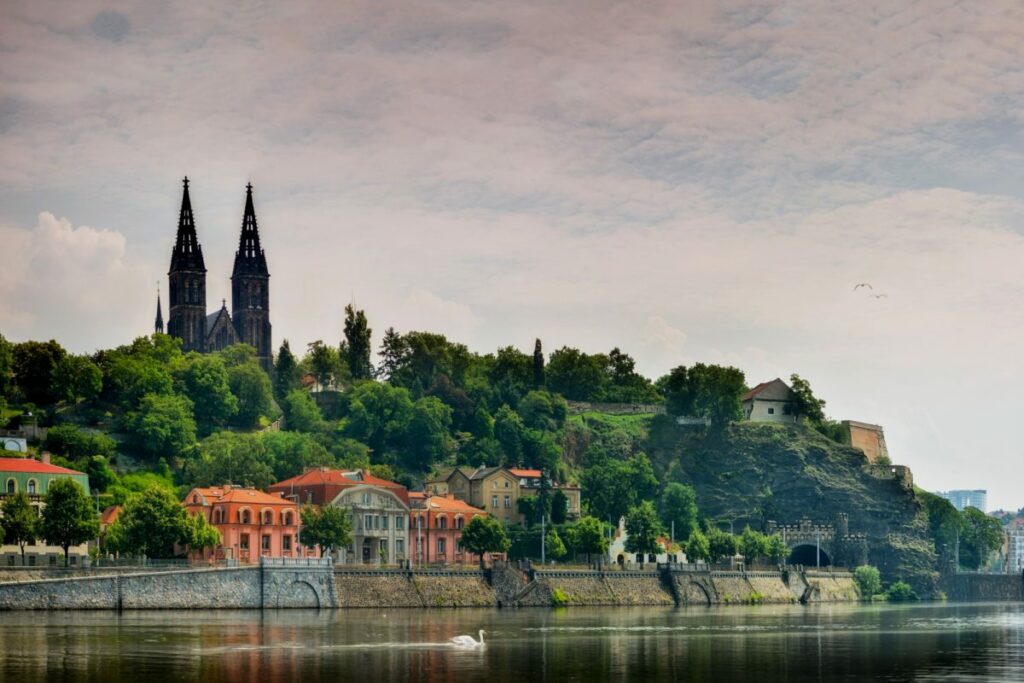
In this article, you’ll find out how to plan your visit to Vyšehrad, the 3 places you shouldn’t miss, how to get there and why you should definitely leave on foot.
Why do Praguers love this place?
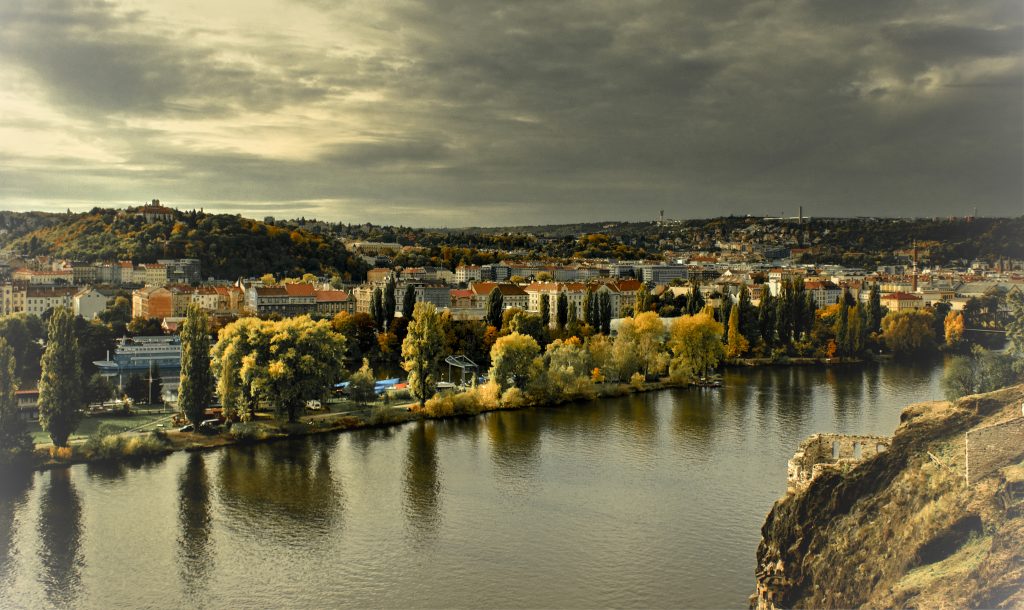
This former fortified military fort is located south of the city center, on a rocky promontory. A relaxing hour’s stroll along the high brick ramparts offers a superb view of the river bridges, with Prague Castle in the background. You’ll realize just how big Prague really is, and you’ll be able to identify the landmarks you’ve already visited… This relaxing stroll is a must if your stay exceeds two days or if you want to visit Prague off the beaten track.
It’s one of Prague’s favorite autumn strolls
Every year in November, St. Martin’s Day is celebrated in Vyšehrad.
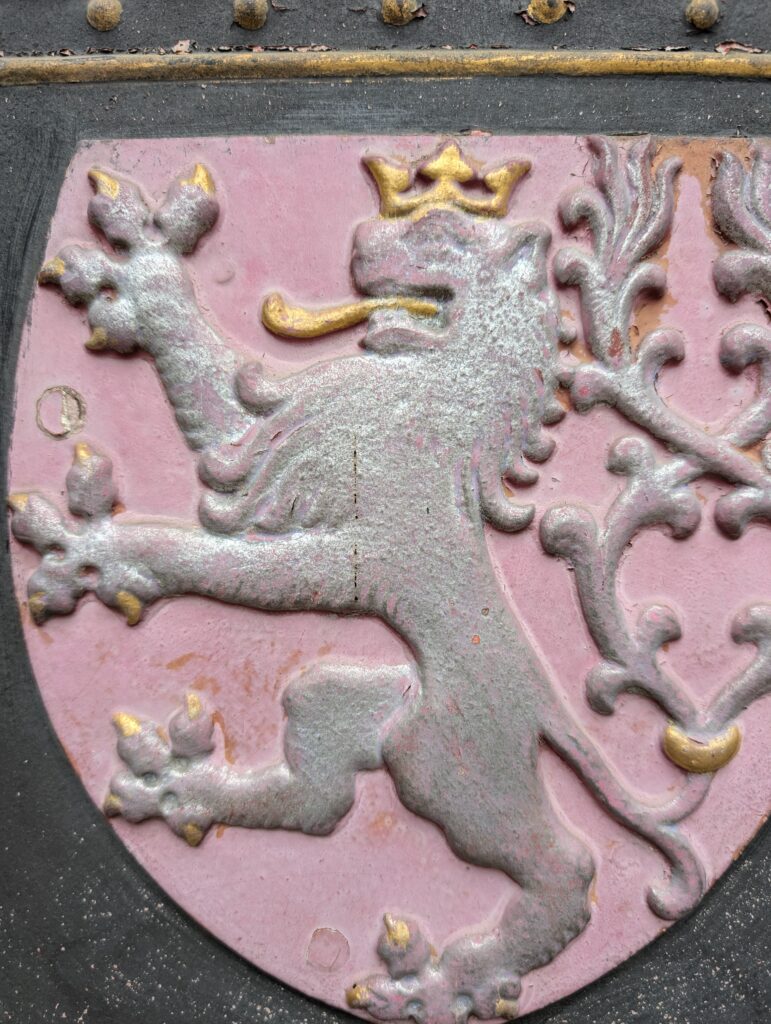


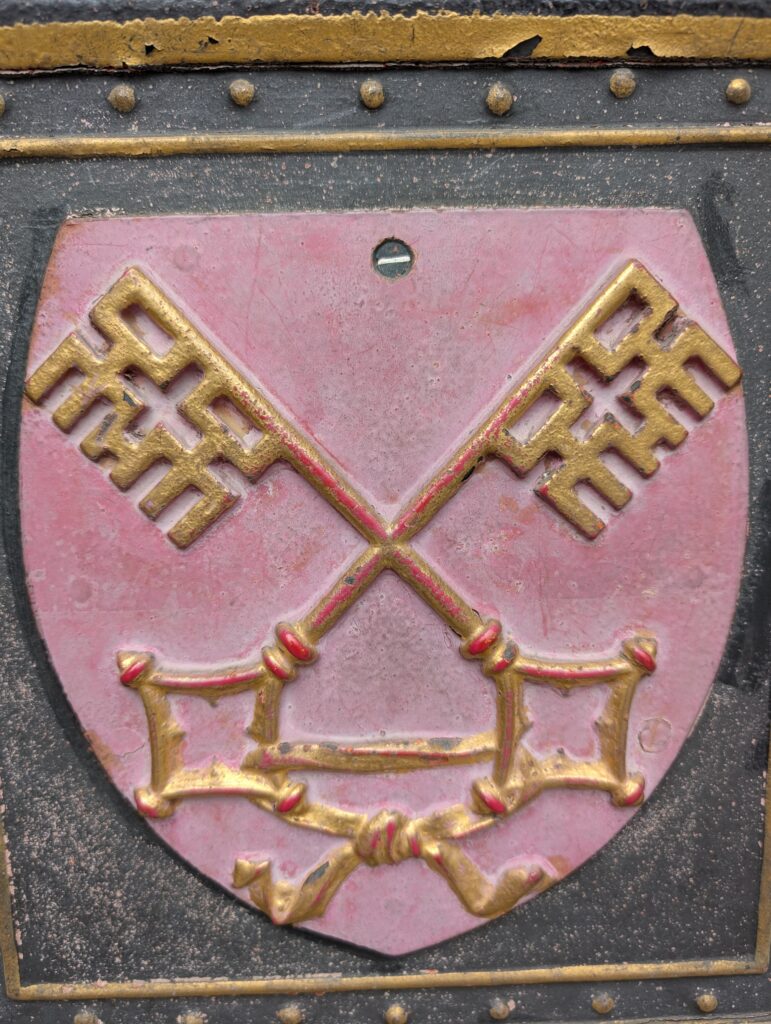
Start with a complete tour of the city walls
As soon as you arrive in Vyšehrad, whichever gate you entered through, start by admiring the view from the top of the ramparts. There’s a very pleasant, free path along the entire length of the ramparts.

The panorama is magnificent! You can see Prague from all sides
It’s a beautiful and relaxing walk. You can stop to lie on the grass in the fortress park or on the many benches to admire the view. It’s all very romantic. This tour of the ramparts will give you a good idea of the topography and what you can explore next.
Take a break in the beer garden or on a terrace

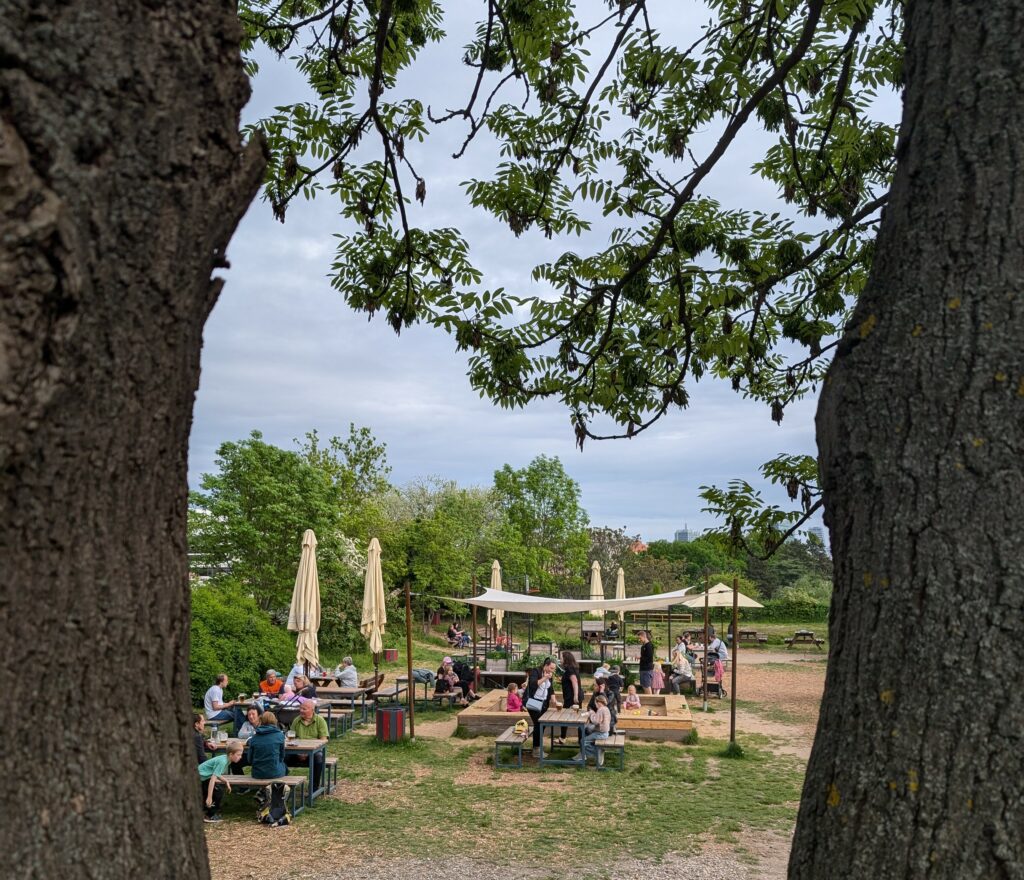
As you tour the terraces, you’ll inevitably come across the enormous beer garden (Na hradbách), located along the defensive walls behind the Leopold Gate. I urge you to visit it in fine weather. As always, the beer is cheap and delicious.
The place not to be missed in Vyšehrad: the cemetery!
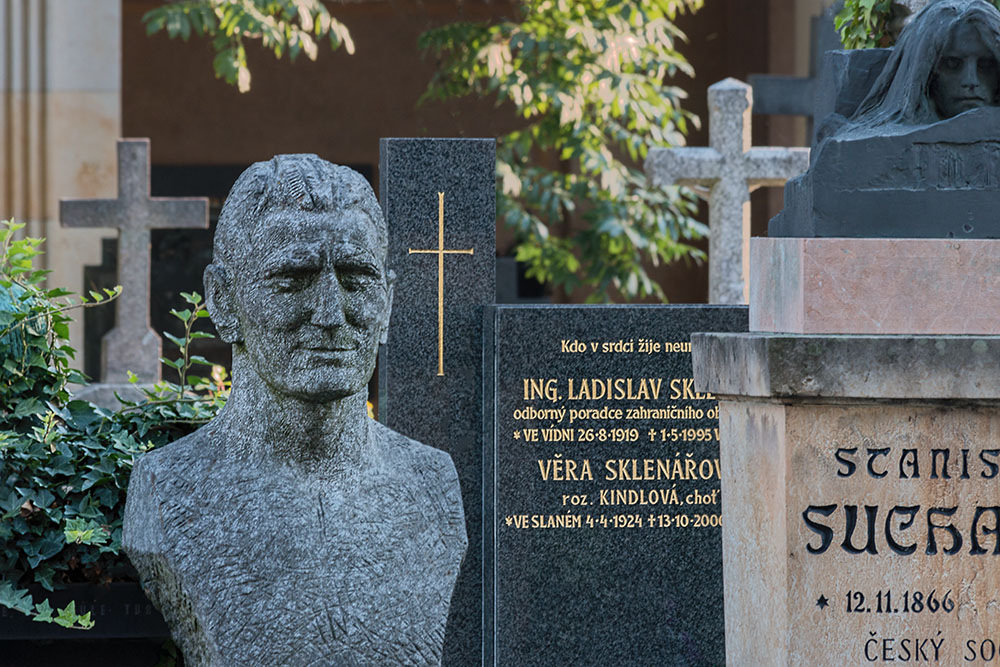
From the 19th century onwards, with the blossoming of national consciousness, the great men of the nation were welcomed in the Vyšehrad cemetery. In all, over 600 Czech personalities are buried here.
As you stroll through the cemetery , you’re bound to stop in front of the Slavín, which was completed in 1893 and has become a kind of National Pantheon. At the top, you’ll notice the winged Genius of the Fatherland leaning over a sarcophagus…
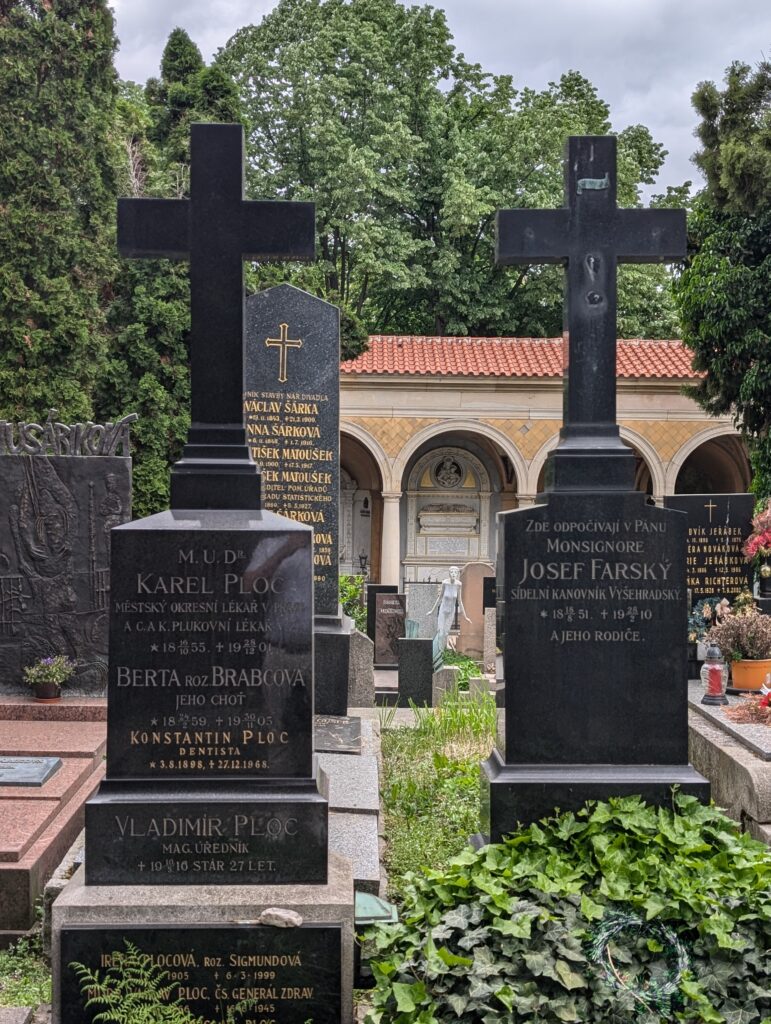
Of course, the great Czech men buried here won’t mean a thing to you, except perhaps the painter Alfons Mucha (a famous poster artist of the Belle Epoque who made his career in Paris with his famous portraits of Sarah Bernhardt for the theater and his advertisements). You may not know him by name, but his drawings will probably ring a bell.
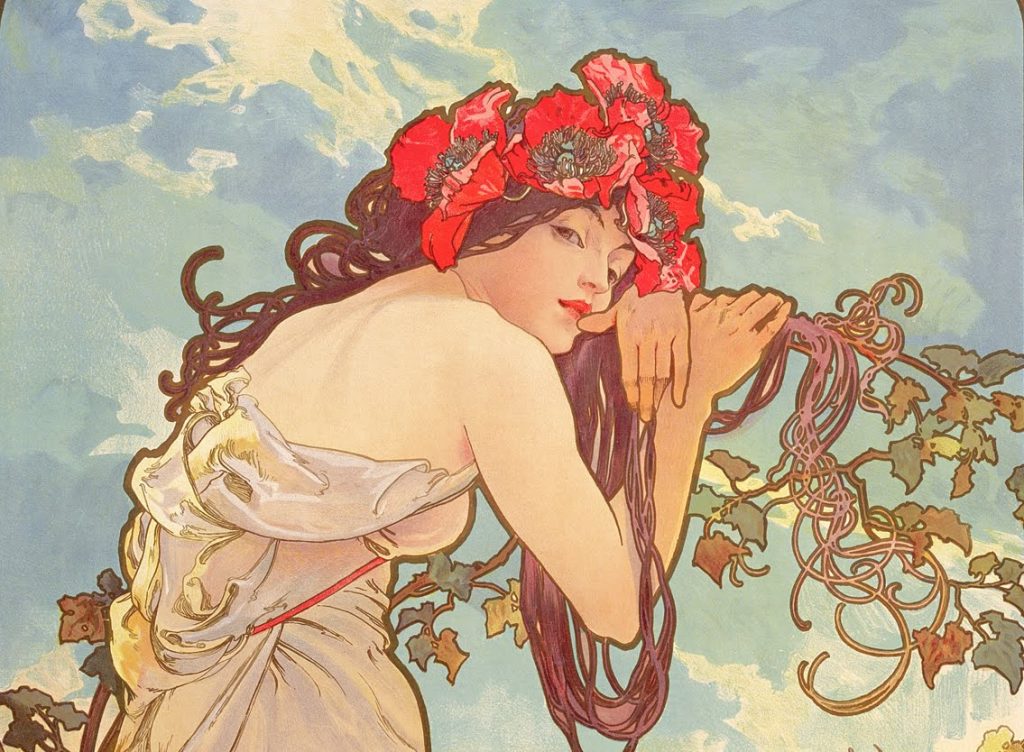
The Vyšehrad cemetery has become a kind of national pantheon
Four great men and women buried in Vyšehrad
As I suspect you’re not familiar with them, I’m posting a link to their Wikipedia page in case you’d like to know more.
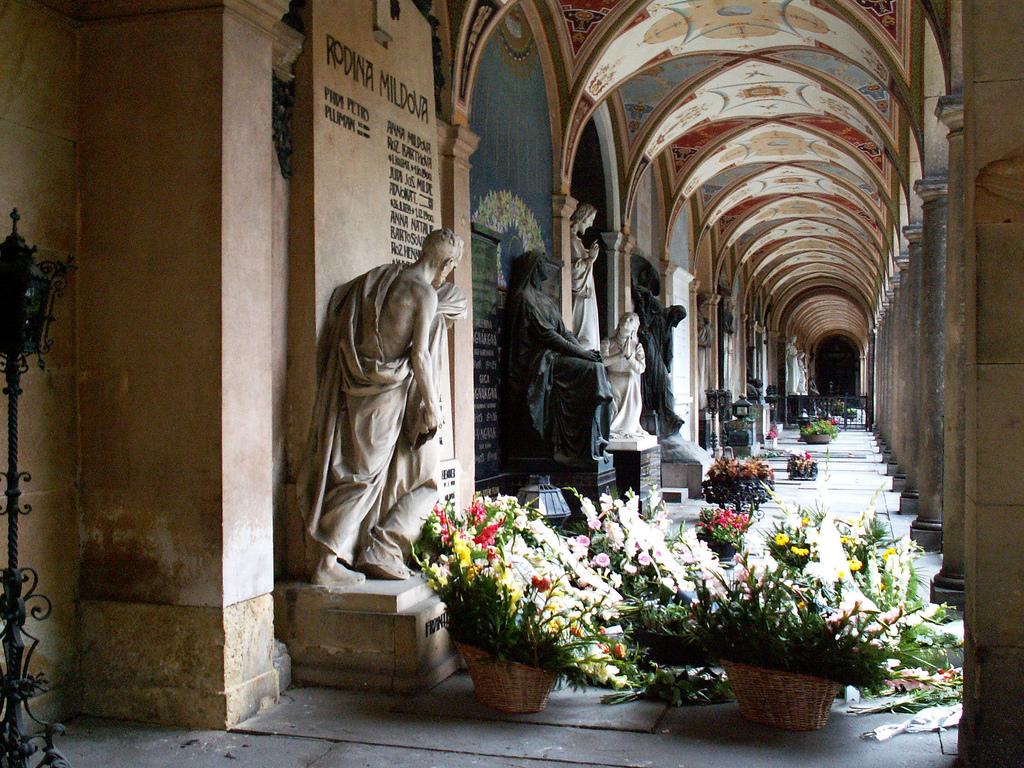
In the Vyšehrad cemetery, you’ll find :
- Composers Antonín Dvořák and Bedřich Smetana
- Writer Karel Čapek , originator of the word robot
- Milada Horáková, politician hanged in 1950 and a leading figure in the resistance to communism
Please note: If you’re looking for Franz Kafka’s grave, you won’t find it here. It’s in the Jewish cemetery in Prague-Olšany and is one of Prague’s most unusual attractions.
And you can even sleep in the neighborhood. It’s a picturesque neighborhood that I like, especially at the bottom of the hill, when you get closer to the river. You’ll find few tourists, pretty cubist houses and it’s very easy to get to the center with the trams that run along the river!
And to eat, head to U Kroka (Vratislavova 28) for affordable, refined Czech cuisine!
Let’s start with a bit of history
Vyšehrad is set back from the historic center and overlooks the Vltava River. This fortified site, surrounded by legends and dating back to the mid 10th-century, has often been wrongly attributed with a greater antiquity. In any case, it is associated with the Přemyslid dynasty. Legend has it that Princess Libuše, founder of the dynasty, stood on the rocky outcrop of Vyšehrad and looked towards the present castle site to see the future of the Czech nation. In 1140, the present castle was finally chosen as the royal residence. But according to a regulation issued by Charles IV in the 14th century, the King of Bohemia was still to be crowned at Vyšehrad, before the procession took the Royal Way to the Castle. Today, Vyšehrad remains Prague’s second most important historical complex.
A stroll through Vyšehrad, a magnificent 10th-century fortified site overlooking the Vltava River
Devastated in 1420 during the Hussite wars, rebuilt as a Baroque fortress in the 17th century, only vestiges of its golden age remain. The Romanesque Basilica of St. Lawrence, for example, is still the subject of major archaeological excavations.
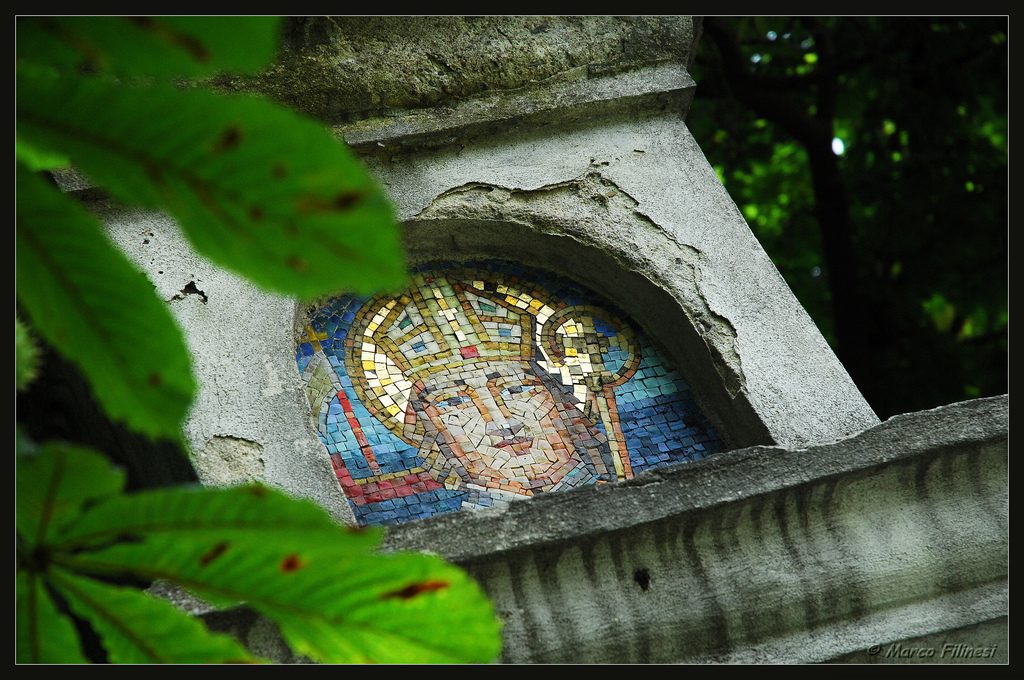
Don’t miss the Romanesque rotunda of Saint-Martin (11th century), near the Leopold Gate. It’s Prague’s oldest rotunda and stands next to a 17th-century plague column. You’ll also have the opportunity to discover a lovely park (children’s playground opposite the rotunda). The other religious buildings from the Middle Ages have disappeared. Vyšehrad also features three strange stone columns. The Devil’s Column refers to a legend depicted on a mural in the Basilica of St. Peter and St. Paul.
The neo-Gothic Saint-Pierre-et-Saint-Paul church dominates the area (1887-1903). Originally Romanesque, only the foundations remain. If you see a young woman lighting a candle in front of a painting called The Madonna of Vyšehrad or Madonna of Rain (it’s a copy, the original is in the National Gallery), it’s to ensure a healthy baby! To the left of the church you’ll also find four large statues (late 19th century), four pairs of legendary characters, including Princess Libuše and her husband, Přemysl. They originally stood at the Palacký Bridge and were moved during the Second World War. They are the work of Josef Václav Myslbek (author of the equestrian statue of St. Wenceslas at the top of Wenceslas Square). Finally, in one of the niches near the main entrance, in a glass and gold display case, the Church of St. Peter and Paul also houses a relic of St. Valentine (part of a shoulder blade) found in a cupboard in 2002. This Baroque relic, which had been lost for almost a century, was found during an inventory. It may well have been acquired by King Charles IV (creator of the famous Charles Bridge), who collected them. Convinced that the end of the world was approaching, he believed that a large number of relics and churches would ensure eternal rest for his fellow citizens. The relic of the patron saint of love had been put aside because, with its gold, it no longer fitted in with the austerity of the neo-Gothic transformation that took place in the late 19th and early 20th centuries. It is on display near the main entrance. If you’re in Prague on February 14, make sure you go to this church: a pilgrimage on Valentine’s Day (celebrated in the Czech Republic only since the Velvet Revolution in 1989) is organized, with the relic on display! Opposite is a stone coffin that has been empty since the Hussite wars. It’s that of Longinus, who, according to Christian tradition, was present at the crucifixion!
Tours of the underground passages (Gorlice, 330 m2 and 13 m high ceilings) are available (access through the 1841 Empire-style brick gate). In the casemates, you’ll see six original Baroque sculptures of the Charles Bridge (the statues on the bridge are now just copies), as well as a permanent historical exhibition : ” Vyšehrad in the history of Prague’s fortifications “.
I’d then recommend walking to the Vltava quays below (take the stairs behind the wall opposite the entrance to the Basilica of St. Peter and St. Paul). Along the way, you’ll have the opportunity to discover some superb Cubist houses : Villa Kovařovič at no. 3 Libušina Street, buildings no. 2 and no. 30 Neklanova Street, villas no. 6, no. 8 and no. 10 Rašin Quay (Rašínovo nábřeží).
Stop off on your way to Vratislavova Street at the super café Čekárna and its superb courtyard or at the super restau U Kroka at no. 28 and mentioned at the start of this article.
Once on the docks, you’ll find a streetcar to the city center, where you can go for a drink at the CERE Yacht Club , a little-known place among Praguers themselves, but so relaxing.
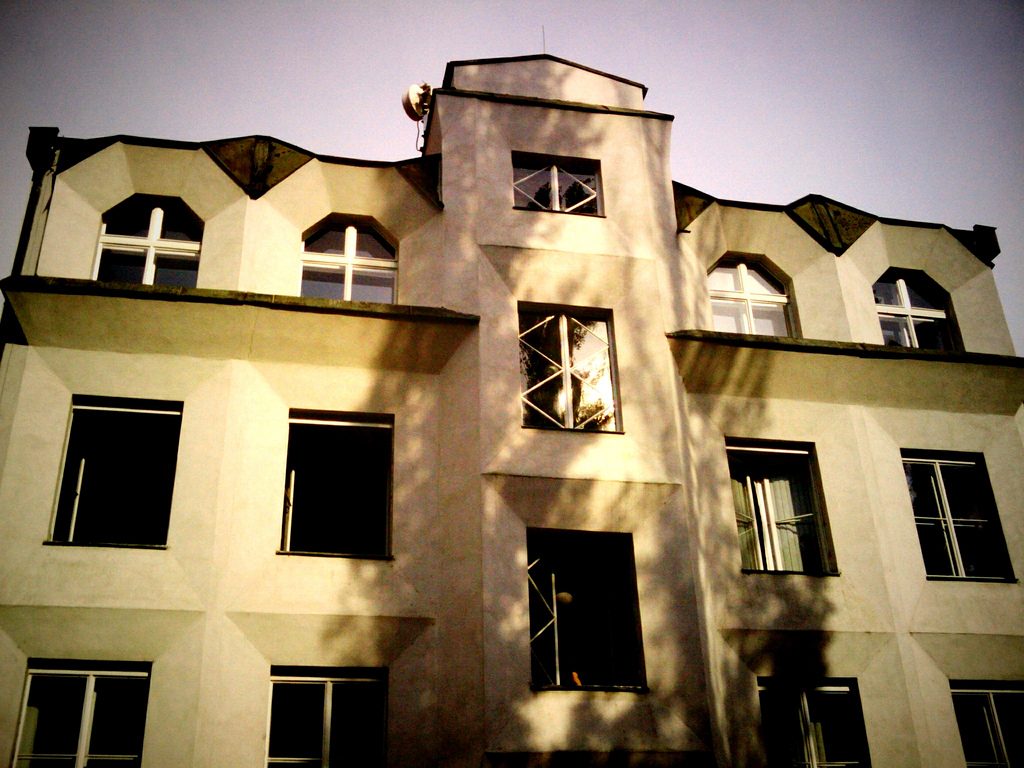
How do I get to Vyšehrad?
Take metro line C to Vyšehrad station, and after a ten-minute walk, you’ll reach a gate giving access to the site.
Or get off at the Výtoň streetcar stop (lines 2, 3, 7, 17 and 21) before climbing the stairs to Libušina and Na Libušince streets. Alternatively, get off at the Podolská vodárna tram stop (lines 2, 3, 17 and 21) and walk up U Podolského Sanatoria street, or get off at the Albertov streetcar stop and walk up Vratislavova street. The information center is located in the imposing 14th-century Gothic Špička (Arrow) Gate. Guided tours can be booked at least one week in advance by writing to info@praha-vysehrad.cz
For full details of the site, please consult the official English page here.